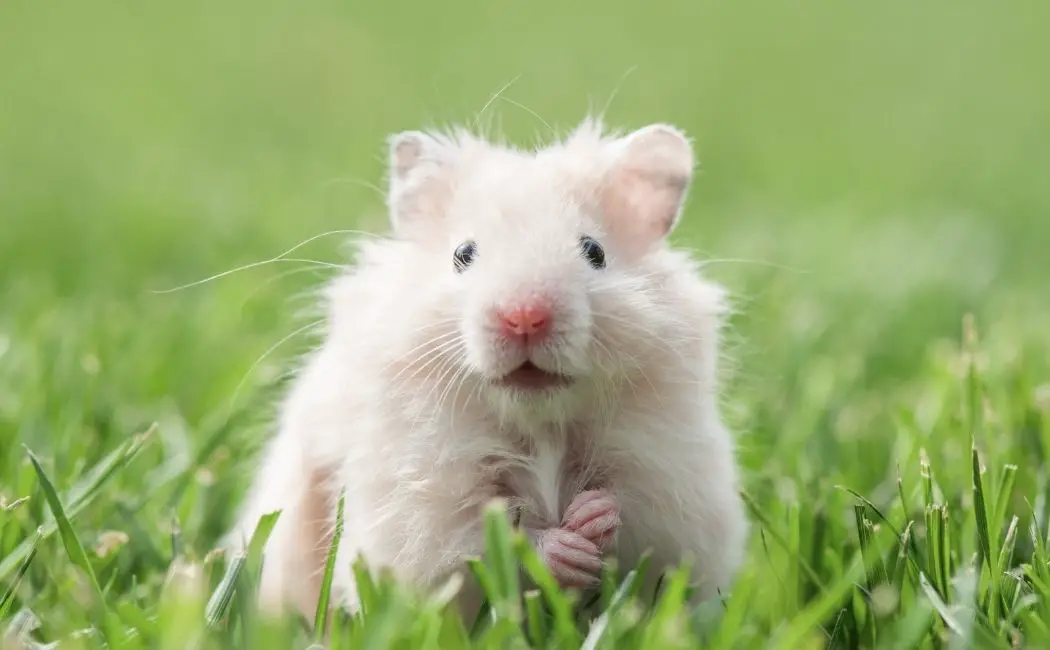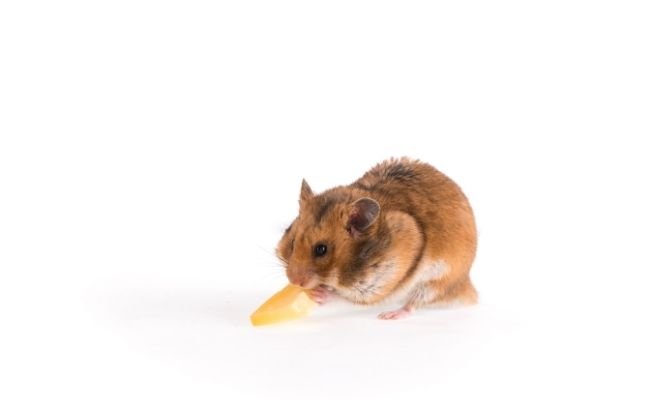Can Hamsters Live Outside? (What You Should Know)
No, hamsters cannot live outside. They are not equipped to survive in the wild and would have a very difficult time finding themselves if left loose. In fact, it is unlikely that a pet hamster left loose would know how to find food.
How long can hamsters live outside?
If you’re thinking of bringing your pet hamster outside, you might be wondering how long they can survive in the elements. The good news is that hamsters are relatively hardy creatures and can withstand a fair amount of exposure to the outdoors. However, there are a few things you should keep in mind to ensure your hamster has a safe and enjoyable experience.
First, it’s important to note that while hamsters typically thrive at indoor temperatures, they can also tolerate brief periods of exposure to extreme cold or heat. However, if you do choose to bring your hamster outside, it’s important not to expose them to temperatures that are too extreme—either too hot or too cold.
A general rule of thumb is 10-15 minutes per day for pet rodents like guinea pigs, hamsters, and gerbils brought outside.
Another thing to keep in mind is that small pets like hamsters tend to be more vulnerable to predators when they’re outdoors. So if you do let your hamster out for some time each day, it’s important to make sure they’re in a safe area where there aren’t any potential threats lurking about.
How long should I let my hamster out?
The amount of time you should let your hamster out will depend on a few factors, including the size of its enclosure and how active it is. Generally speaking, the recommended time for letting a hamster out is 15-30 minutes.
However, if your hamster’s enclosure is on the larger side, or if it is particularly active, you may be able to let it out for longer periods of time. Just be sure to monitor your hamster closely to make sure it doesn’t become too stressed out in a larger environment.
Can you take your hamster for a walk?
You can take your hamster for a walk, but there are some risks involved. First, your hamster needs to be securely harnessed. Second, you need to be very careful not to let the hamster get away from you or fall.
Third, walking your hamster puts it at risk of being attacked by other animals or getting hit by cars. Finally, there are safer alternatives for hamster exercise and entertainment that don’t involve taking them for walks.
How long can a hamster survive on its own?
A hamster can survive on its own for around 3-4 days. After that, it will begin to experience health problems and may even die.
The main reason for this is that a hamster needs water to stay alive, and without access to water, it will quickly become dehydrated.
Additionally, a hamster also needs food to eat in order to survive. Without food, a hamster will begin to experience malnutrition and may eventually die from starvation.
What is the ideal temperature for hamsters living outside?
Hamsters are descendants of wild Syrian hamsters, which means they are best adapted to living in an environment with an ambient air temperature of about 65°F to 75°F. If temperatures drop much below that, it can put your hamster at risk of various health problems.
Some common health problems associated with cold weather include respiratory infections, dehydration, and hypothermia.
There are a few things you can do to make sure your hamster stays warm enough in colder weather. One is to provide them with a nesting box filled with a soft bedding material like shredded paper or hay. This will help them stay insulated from the cold ground.
You should also make sure they have plenty of freshwater available at all times, as dehydration is a common problem in colder weather.
What kind of food do hamsters need when living outside?
Hamsters are small, rodents that originate from the Middle East. In the wild, they eat a diet of seeds, fruits, and vegetables. When living in captivity, hamsters can be fed a diet that is similar to their natural diet.
The best way to provide nutrition for your hamster is to give them fresh (rinsed with water) fruits and vegetables. Some good options include carrots, squash, broccoli, cauliflower, and cucumber. Romaine lettuce, spinach, and other greens are also good choices.
How can I keep my hamster safe from predators when living outside?
When it comes to keeping your hamster safe from predators, there are a few things you can do.
First, make sure that the enclosure you’re using is secure. There should be no gaps or openings that a predator could get through.
Second, if possible, place the enclosure in an area that’s out of reach of predators. This could mean putting it on a high shelf or table, or in a room that can be closed off and locked.
Third, consider adding some type of cover to the top of the enclosure to further deter predators. This could be something like chicken wire or netting.
Finally, keep an eye on your hamster when they’re outside so you can quickly bring them back inside if necessary. By taking these precautions, you can help keep your hamster safe from harm.
What are the benefits of hamsters living outside?
There are many benefits to hamsters living outside. One of the most obvious benefits is that they have more space to run and play. They also have access to fresh air and sunlight, which can be very beneficial for their overall health.
Additionally, hamsters who live outside tend to be less stressed than those who live inside, as they are not constantly surrounded by humans and other animals. This can lead to a longer lifespan for your hamster.
Overall, there are many advantages to letting your hamster live outside, both in terms of their physical health and their mental well-being.
Are there any drawbacks to hamsters living outside?
Hamsters are generally quite hardy creatures and can live outside without too many problems. However, there are a few things to keep in mind if you’re thinking of letting your hamster live outdoors.
One potential problem is that outdoor hamsters may be more susceptible to predators than their indoor counterparts. This is especially true if you have a small or timid hamster, as they will be less able to defend themselves against larger animals. If you’re worried about predators, you can take steps to protect your hamster by keeping them in a secure enclosure (such as a wire cage) when they’re outside.
Another thing to consider is the weather. While most hamsters can tolerate cold weather pretty well, extreme temperatures can still be dangerous for them. If it’s too hot or humid, your hamster could overheat; if it’s too cold, they may develop frostbite or other health problems. Be sure to monitor the weather conditions closely and bring your hamster inside if it gets too extreme outside.
Overall, there are some risks associated with letting your hamster live outdoors, but as long as you take precautions to protect them from predators and extreme weather conditions, they should be fine.
Can hamsters survive alone?
Yes, hamsters can live alone since they are solitary animals. Both Syrian and Chinese hamsters will fight to the death if kept together with other species, but dwarf hamsters aren’t bothered by having some company of the same species even in captivity.
What are the benefits of letting a hamster live outside?
There are a few benefits to letting your hamster live outside. One is that they will have more space to run and explore. This can help them stay active and healthy, as well as prevent boredom.
Additionally, living outside can help your hamster acclimate to the temperature changes of the seasons, which can make them harder overall.
Finally, if you have other pets in the house, letting your hamster live outside can give them a much-needed break from all the commotion.
How long can a hamster live outside?
If you’re thinking of letting your pet hamster live outside, you might be wondering how long they can survive in the open air. The answer isn’t as simple as you might think and depends on a number of factors including the weather conditions and the type of hamster.
In general, hamsters are creatures that thrive indoors at temperatures that are comfortable for humans. This means that if you do decide to let your hamster out for some time each day, they shouldn’t be exposed to extreme heat or cold. Ten to fifteen minutes should be enough time for them to get some fresh air and explore their surroundings without putting them at risk.
Of course, if the weather is particularly hot or cold, you’ll need to take this into account when deciding how long your hamster can stay outside. If it’s too hot, they could suffer from dehydration or heatstroke, so it’s important to make sure there’s plenty of freshwater available and that they have a shady spot to retreat to if needed.
Similarly, in cold weather conditions, your hamster could develop hypothermia if they’re not kept warm enough – so a hutch with bedding would be essential in this case.
As a rule of thumb then, ten to fifteen minutes per day is usually safe for most healthy adult pet hamsters – but always keep an eye on the temperature and make sure there’s somewhere for them to shelter if necessary.
What kind of food do hamsters need if they live outside?
Hamsters are able to live outside, but they need a specific type of food in order to do so. Fresh, organically grown greens are the best for hamsters. Romaine lettuce, dandelion greens, carrot tops, broccoli spears, spinach, artichokes, and any other dark green veggies are great choices.
Avoid iceberg lettuce and other veggies or fruits (like watermelon) that are high in water content as they can cause diarrhea. If you provide your hamster with the proper food, it will be able to live a healthy life outside.
What kind of exercise do hamsters need if they live outside?
Hamsters that live outside need a lot of exercises. A wheel is a great way for them to get their daily dose of cardio. But, they also need room to roam around and explore. A small cage won’t cut it for an outdoor hamster. They need plenty of space to run around and stay active.
What kind of care do hamsters need if they live outside?
Hamsters are relatively low-maintenance pets, but they do need some basic care in order to stay healthy and happy.
If you’re considering keeping a hamster outdoors, there are a few things you need to keep in mind in terms of their housing, diet, and general care.
Housing: Hamsters should have a spacious enclosure that is protected from the elements and predators. The enclosure should have plenty of room for the hamster to exercise, as well as hiding places where they can feel safe and secure. A wire cage is not appropriate for an outdoor hamster; instead, opt for something made of solid material like wood or plastic. The bottom of the enclosure should be lined with bedding such as shredded paper or bark chips.
Diet: In the wild, hamsters are omnivorous creatures that eat a variety of plant matter and small insects. If you’re feeding your hamster a commercial diet, it’s important to supplement this with fresh fruits and vegetables as well as live food items like mealworms or crickets. A dish of clean water must be provided at all times.
General Care: Like all animals, hamsters require regular vet checkups to ensure they are healthy and free from parasites. They also need daily exercise to stay fit and active; a wheel or other type of running device is essential for any outdoor hamster setup.
Are there any special considerations for winter if a hamster lives outside?
Hamsters are typically kept as indoor pets, but there are some instances where they may live outside. If you live in a climate that gets cold in the winter, there are some special considerations you need to take for your hamster if it lives outside.
First, you need to make sure that your hamster has a warm place to stay. This can be accomplished by providing a heated hut or house for your hamster to live in. You also need to make sure that the bedding inside the hut is made of materials that will retain heat, such as cotton or wool.
Second, you need to provide your hamster with plenty of food and water. In the winter, food sources can become scarce, so it’s important to make sure your hamster has enough to eat. You should also check the water supply regularly to ensure that it hasn’t frozen over.
Finally, you should keep an eye on your hamster for any signs of illness or injury. Cold weather can be tough on animals, so it’s important to make sure your hamster is staying healthy throughout the winter months.
Are there any special considerations for summer if a hamster lives outside?
If you live in a hot climate, it’s important to take special care of your hamster during the summer months.
Here are a few things to keep in mind:
1. Make sure your hamster has access to plenty of freshwater. A water bottle is fine, but if it gets hot outside, consider adding some ice cubes to the water to help keep it cool.
2. Provide your hamster with lots of shade and ventilation. If possible, move the cage into a cooler area of the house or garage. You can also provide a small fan for additional airflow.
3. Avoid feeding your hamster foods that are high in sugar or fat, as these can lead to heatstroke. Instead, focus on giving them plenty of fresh vegetables and fruits.
4. Check your hamster’s cage regularly for signs of overheating, such as excessive panting or lethargy.
What happens to a hamster if it lives outside for too long?
Hamsters are small, furry rodents that make popular pets. Though they are often kept indoors, some people do allow their hamsters to live outdoors. However, there are risks associated with outdoor living for hamsters, and it is important to be aware of these before making the decision to let your hamster live outside.
One of the biggest risks facing outdoor hamsters is a disease. Since they will come into contact with other animals who may be carrying diseases, they are more likely to contract something themselves.
Ringworm and mite infestations are two examples of diseases that are more common in outdoor hamsters. In addition, stress can lead to digestive problems in hamsters, and outdoor living is certainly stressful for them. With all of these potential health problems, it is clear that outdoor living is not ideal for hamsters.
So what should you do if your hamster has been living outdoors? The best course of action is to bring him or her inside as soon as possible and take them to the vet for a check-up.
If caught early enough, many of the diseases mentioned above can be treated successfully. However, if left unchecked, they can quickly lead to serious health issues or even death in your beloved pet hamster.
Should I release my hamster to nature?
No, you should not release your hamster to nature. If you do, it will almost certainly die since it lacks the survival instinct to feed and care for itself. Your hamster is a domesticated animal that has been bred in captivity for generations.
As such, it is completely reliant on humans for its food and shelter. If you release it into the wild, it will have no idea how to find food or shelter and will quickly perish.
In some cases, people have tried to release their hamsters into the wild but they are invariably found dead within days or weeks.
So please don’t be tempted to do this – it would be cruel and heartless, and your hamster would undoubtedly suffer immensely before ultimately meeting its demise.





![Are Hamsters Nocturnal or Crepuscular? [What Are They Really!]](https://atractivopets.com/wp-content/uploads/2021/03/Hamster-768x511.jpg)

